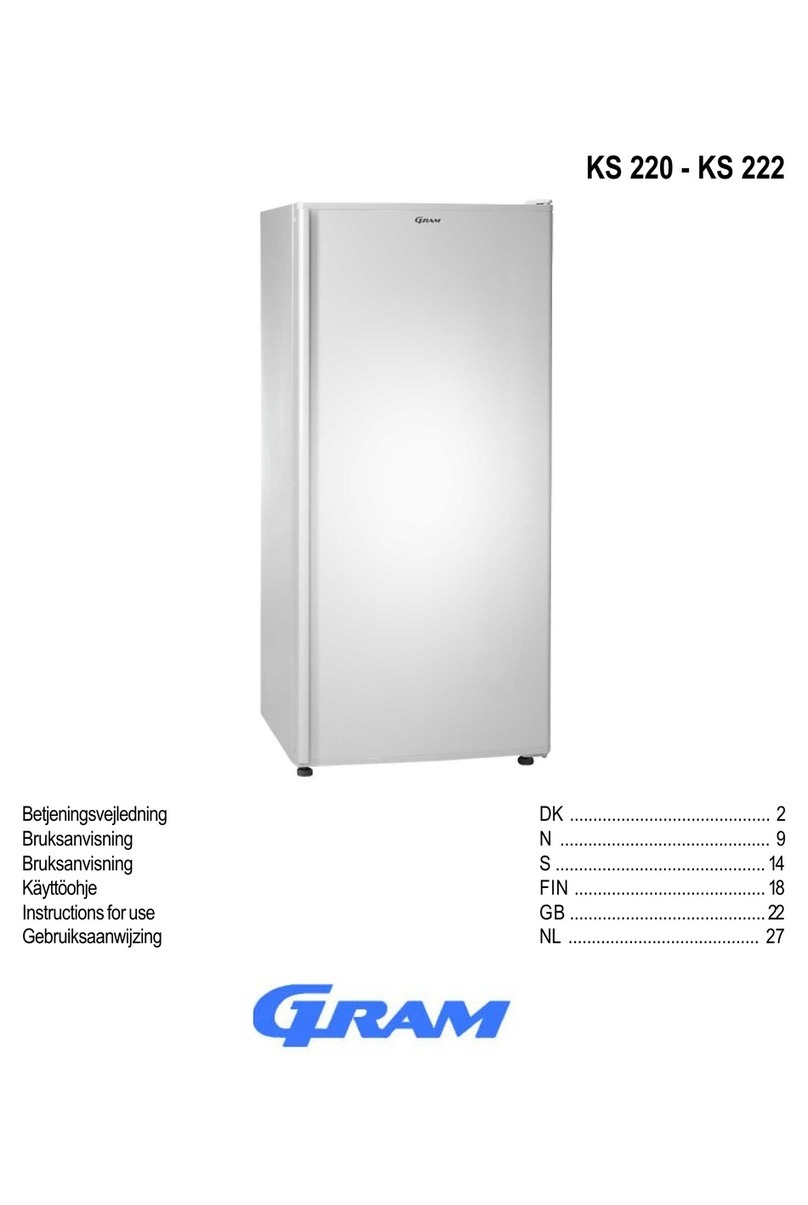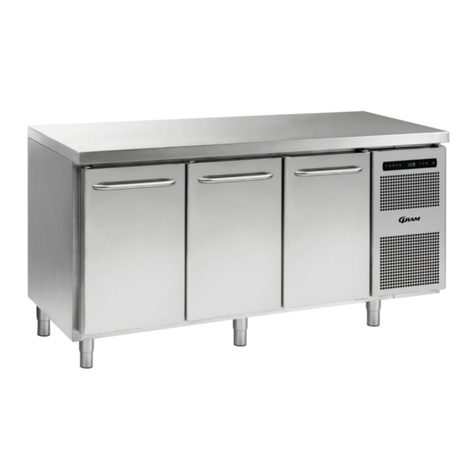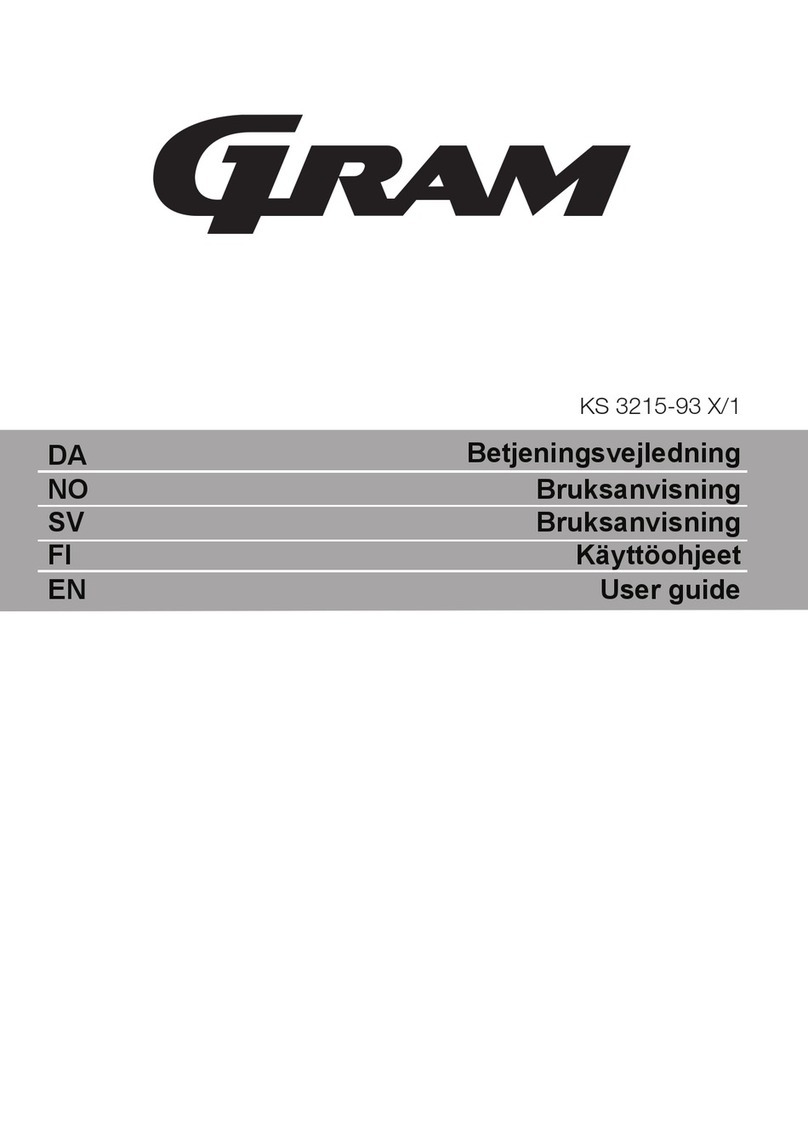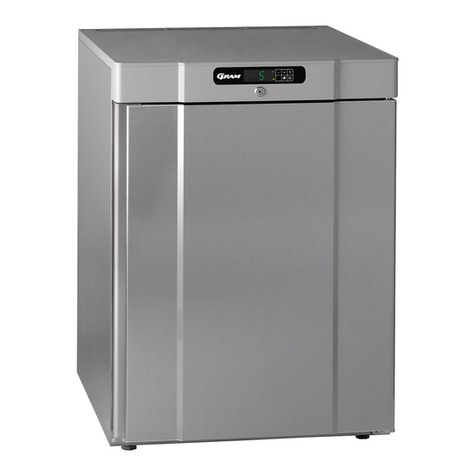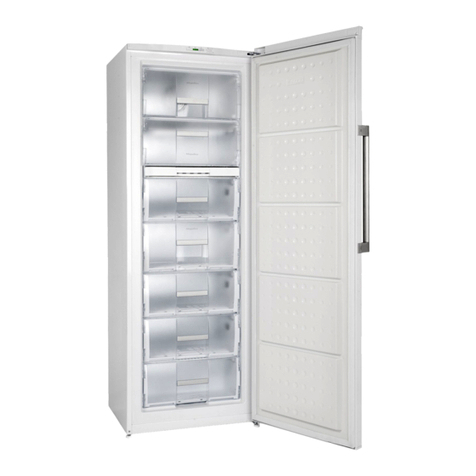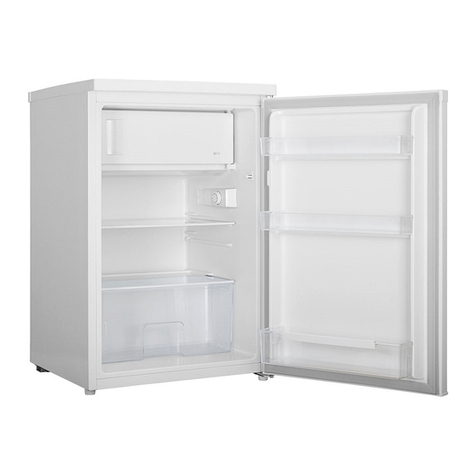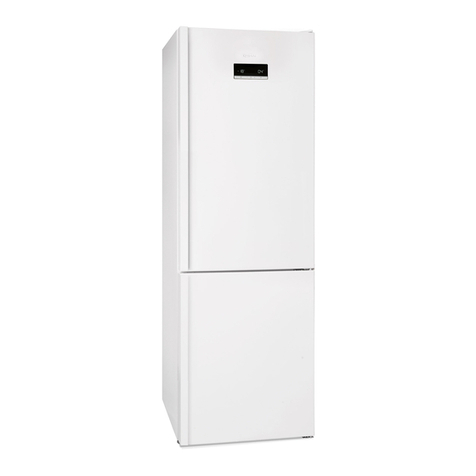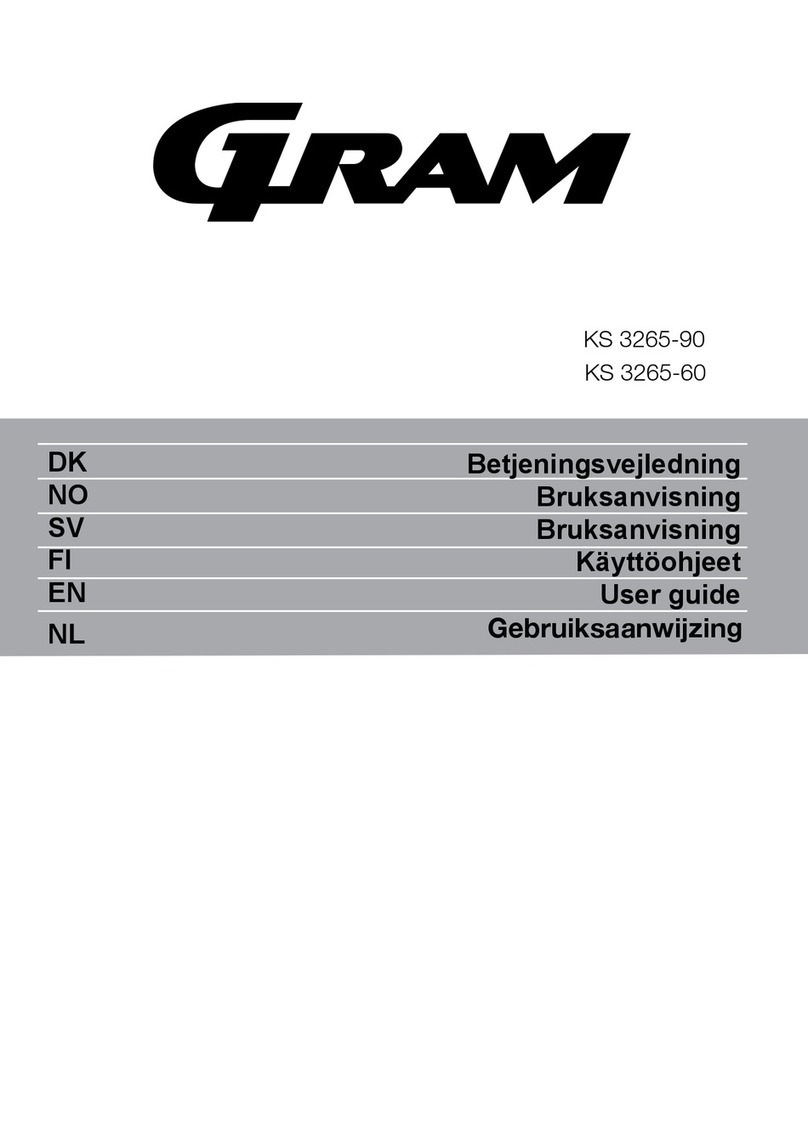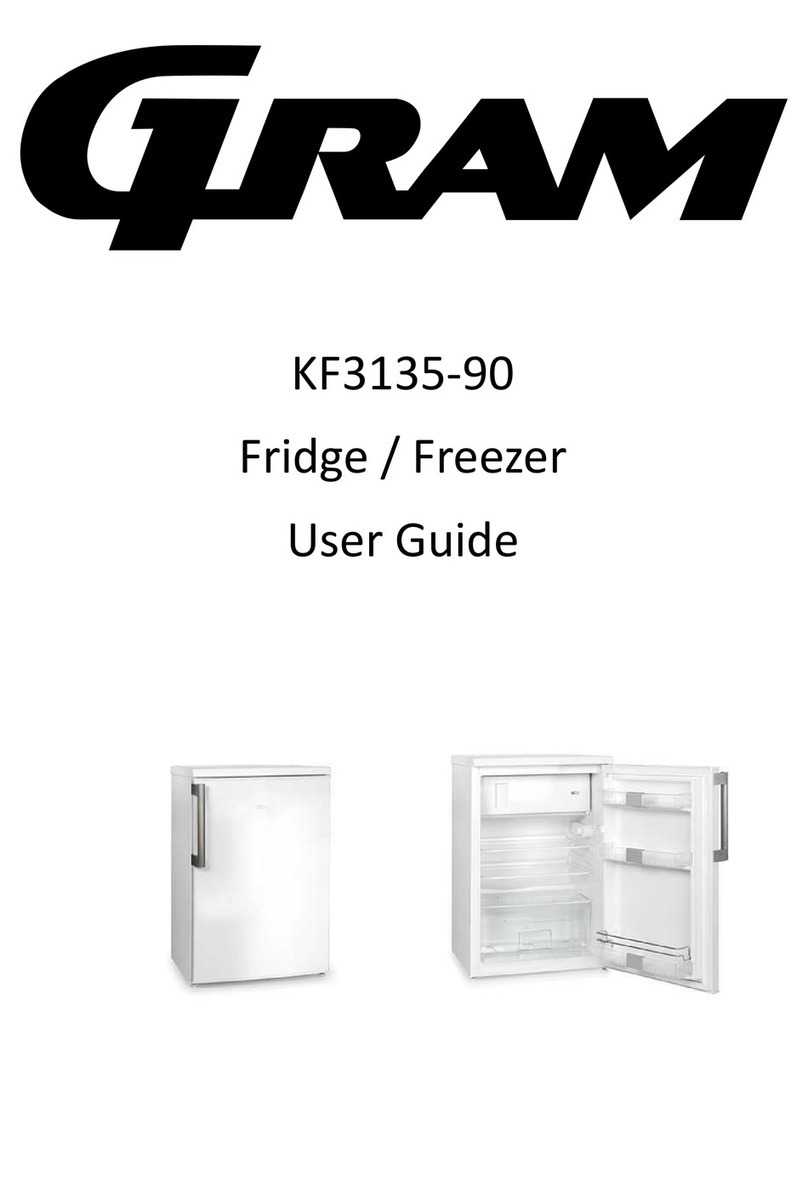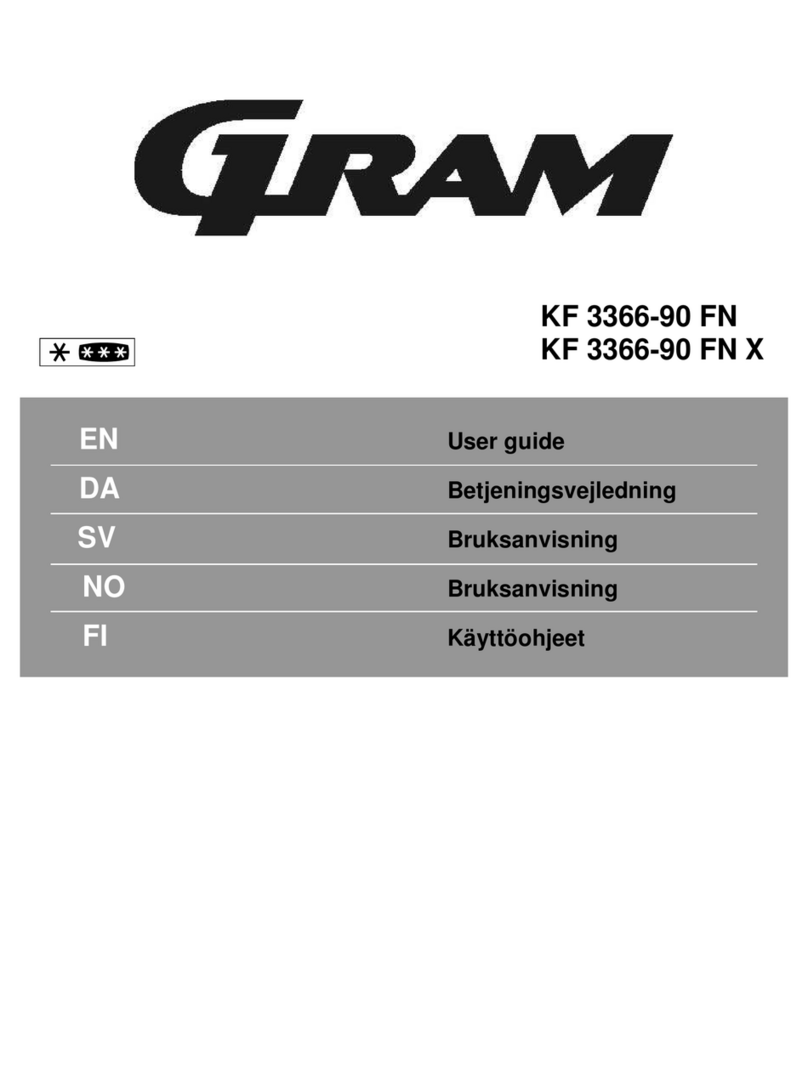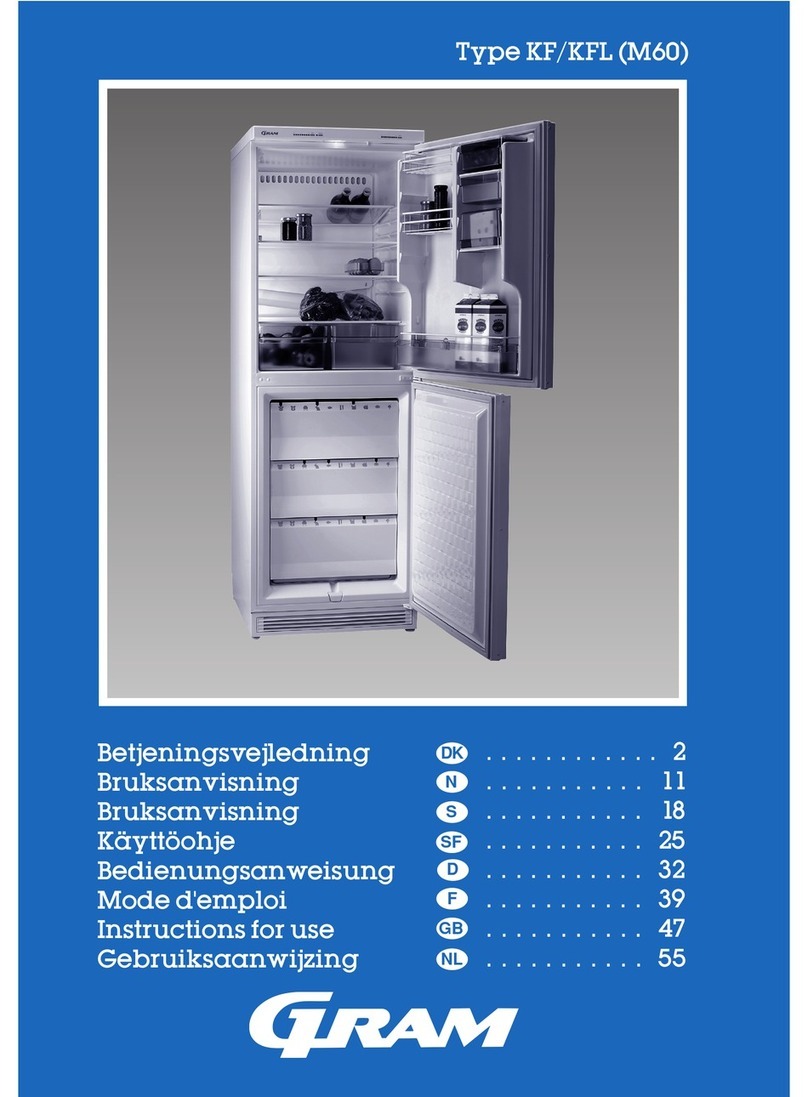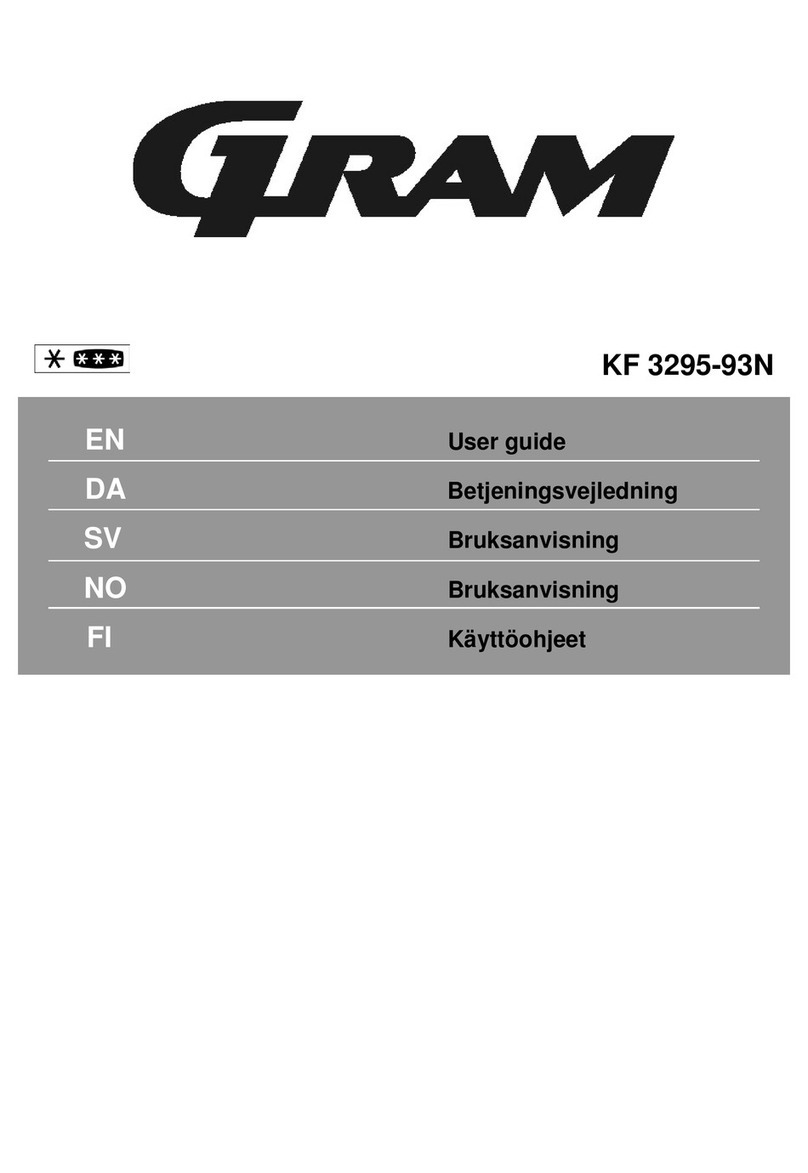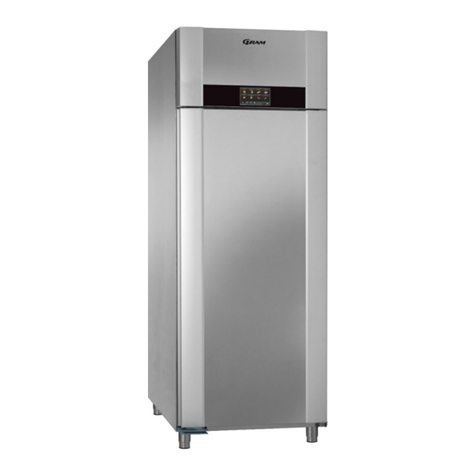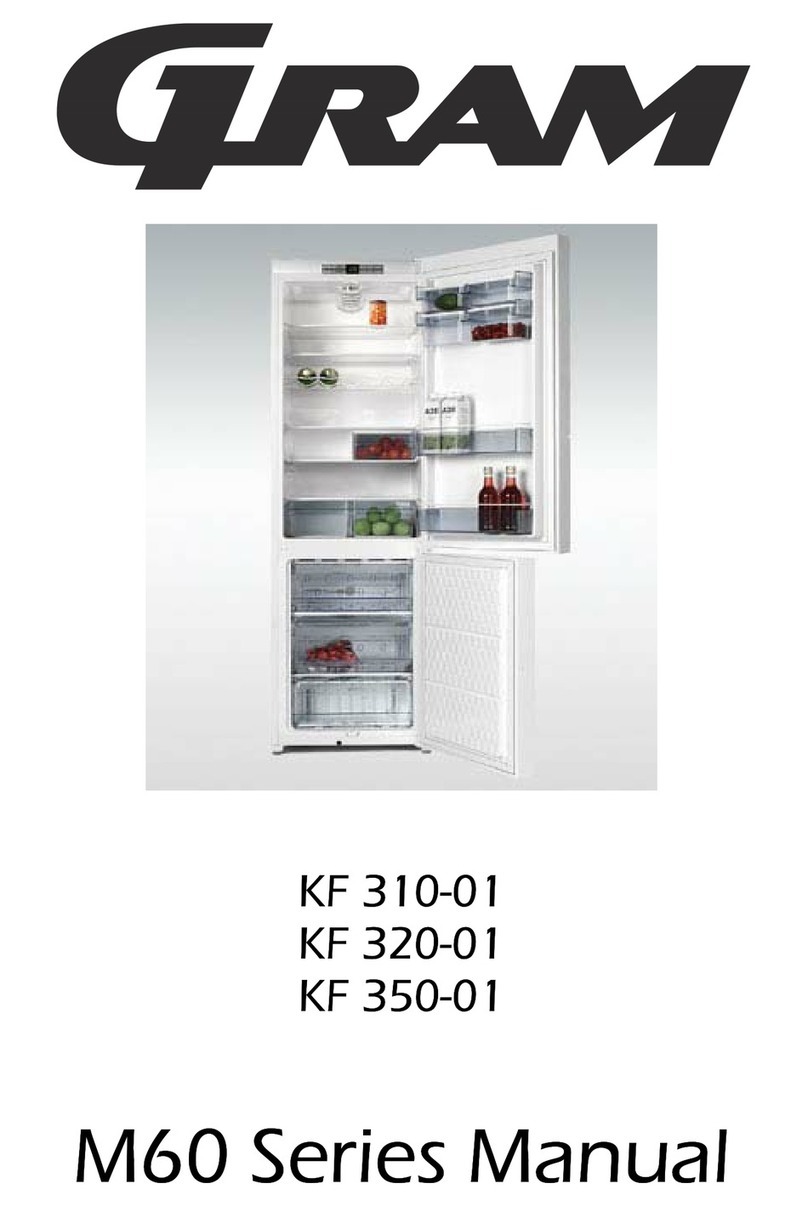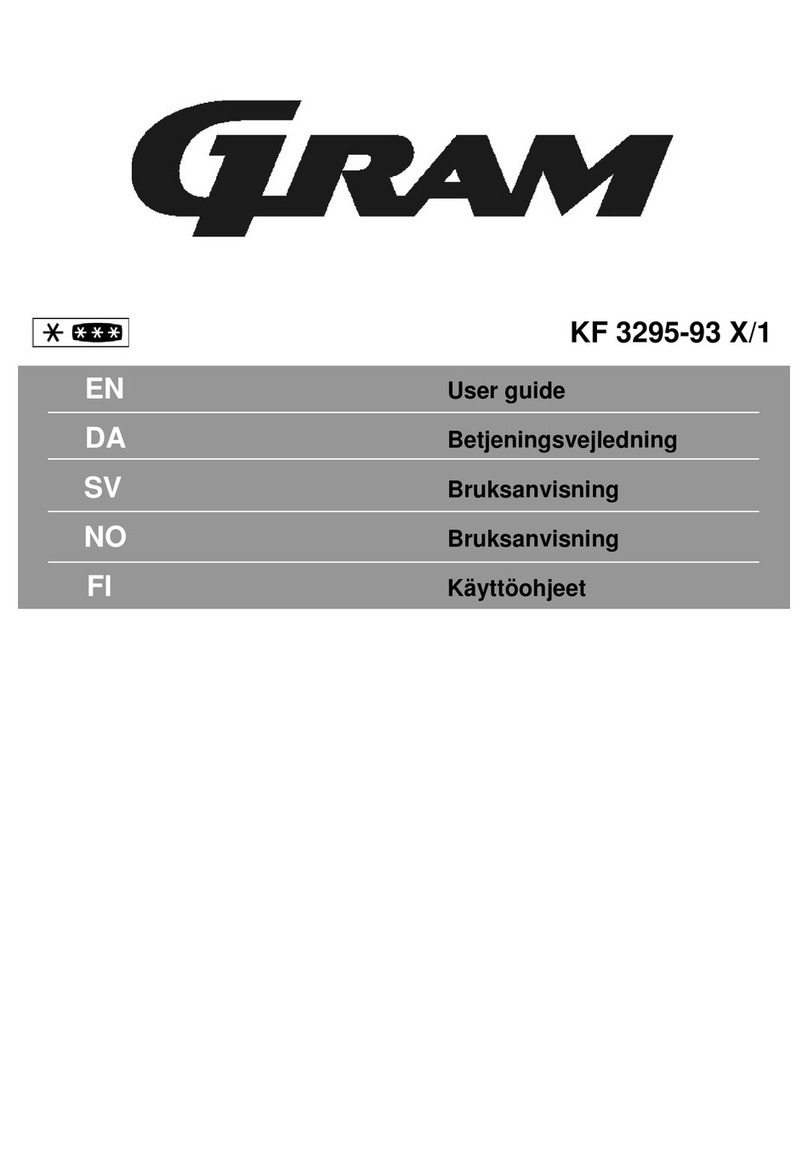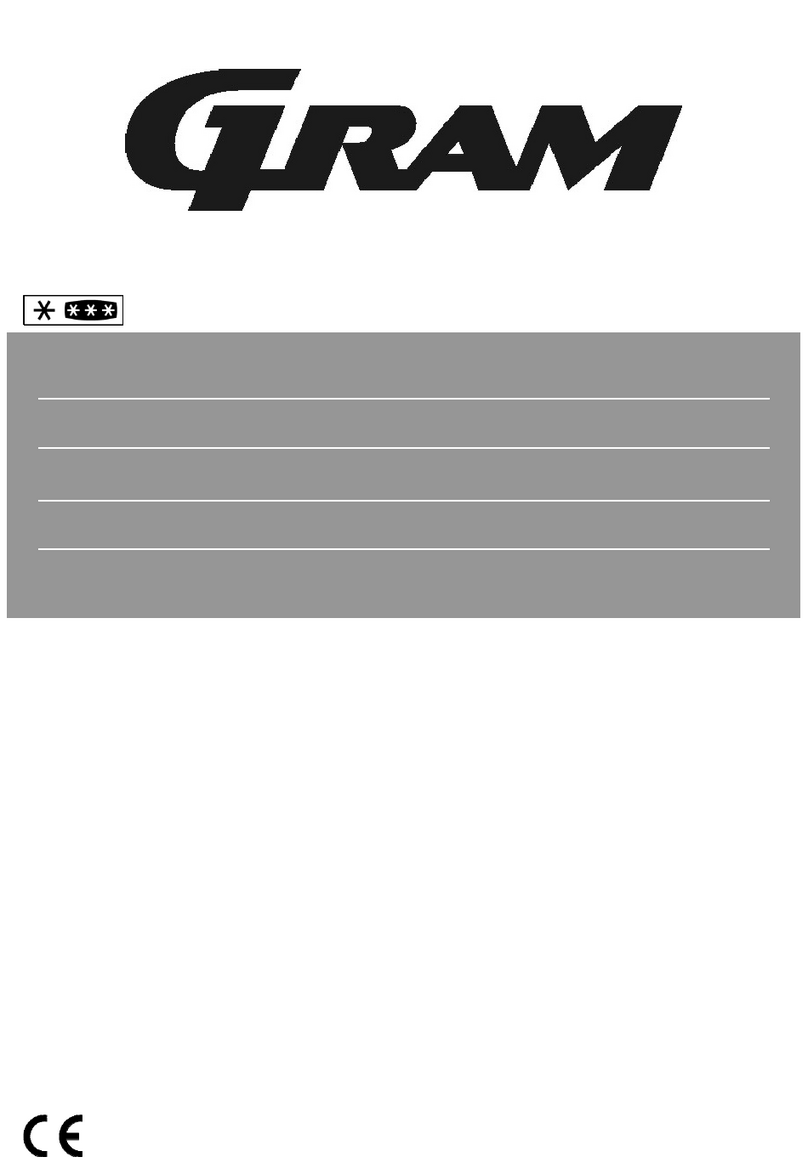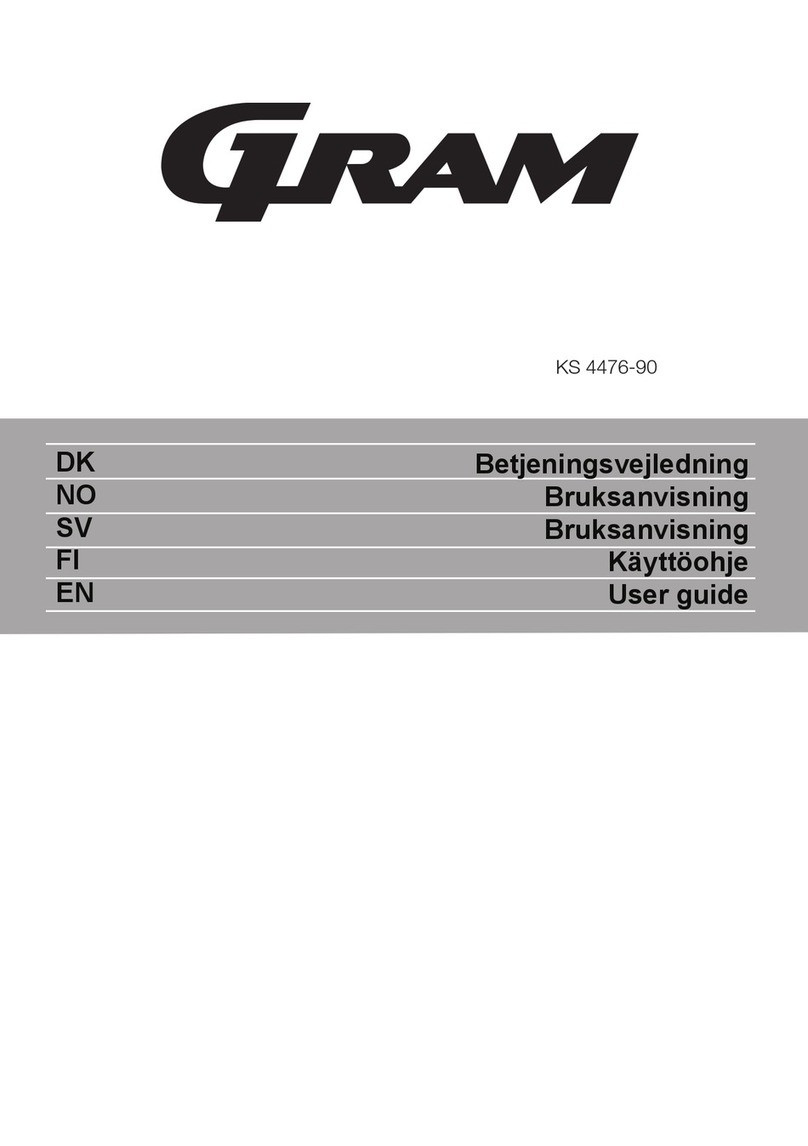8
GB
SwitchingON/OFFtherefrigerator
SwitchingONtherefrigerator:pressandhold
the pushbutton (1). The operation of
switching on the refrigerator is signalled by
thegreen light-emitting LED (3),and the real
temperatureinsidetherefrigerator’schamber
shall be shown on the display.
Switching OFF the refrigerator: press and
hold the pushbutton (2).
Temperature regulation
Thetemperatureintherefrigerator’schamber
canbesetwithinthetemperaturerangefrom
+2oCupto+9oC.Whenpressingandholding
the COOL pushbutton (4), the set
temperature shall be shown on the display.
When pressing the pushbutton (6) or
pushbutton (7) it is possible to modify
setting of the temperature inside the
refrigerator.
Every pressing of the pushbutton shall
activateabriefacousticsignal.Incaseofthe
power supply failure or disconnecting the
power supply to the refrigerator, the control
will keep in the memory the latest settings
after the power supply has been restored.
Temperatureinsidetherefrigerator
The temperature settings and temperature
values shown on the display are average
temperatures of the refrigerator. Do not
change the temperature setting simply
becauseitiswarmerinsummer.Theincrease
of the room temperature will be detected by
the sensor and the compressor will
automaticallyrunforalongertimetomaintain
the set temperature.
Super refrigerating function
- thefirstpressingofthepushbuttons(10)
+ (4) switches on the blue light-emitting
LED (8) and activates quick cooling
down of the refrigerator’s chamber to
the temperature of approximately 1oC
(the continuous operation of the
compressor), after the temperature of
1oC has been reached the function
automatically disables and the
equipmentswitchesintoanormalcyclic
operation restoring the latest
temperature set for the refrigerator.
- during the super refrigerating function
operation, the display shows “Sc”
indication,
- thesecondpressing ofthepushbuttons
(10)+ (4), (duringoperationof the quick
refrigerating function), disables the
function and switches off the blue light-
emitting LED (8).
It is recommended to switch on the quick
refrigerating function “Sc” before loading the
refrigerator’schamber witha largequantityofthe
fresh food products.
ss
ss
s
t t
t t
t
Brief temperature variations
Brief temperature variations are normal and
may occur when for example the fresh food
productsarestoredintherefrigeratororwhen
the door is open for a longer time. These
variations will not affect the food products
and the temperature will quickly return to the
set-point level.
The interior light switches on when the door
of the refrigerator’s chamber has been
opened. When the door remains open, the
interior light switches off after approximately
3 minutes. The display will show E4 alarm
and the acoustic alarm will be activated.
“HOLIDAY”function
This is the function of minimum energy
consumptionnecessaryforcoolingdownthe
refrigerator’s chamber. It prevents from
formation of bacteria and bad smells inside
the refrigerator’s chamber. During this
function the refrigerator operates cyclically.
